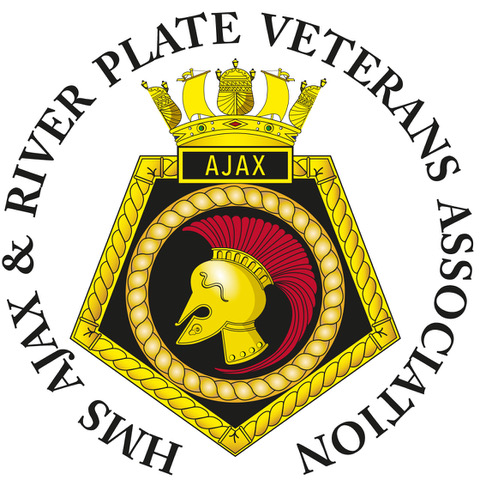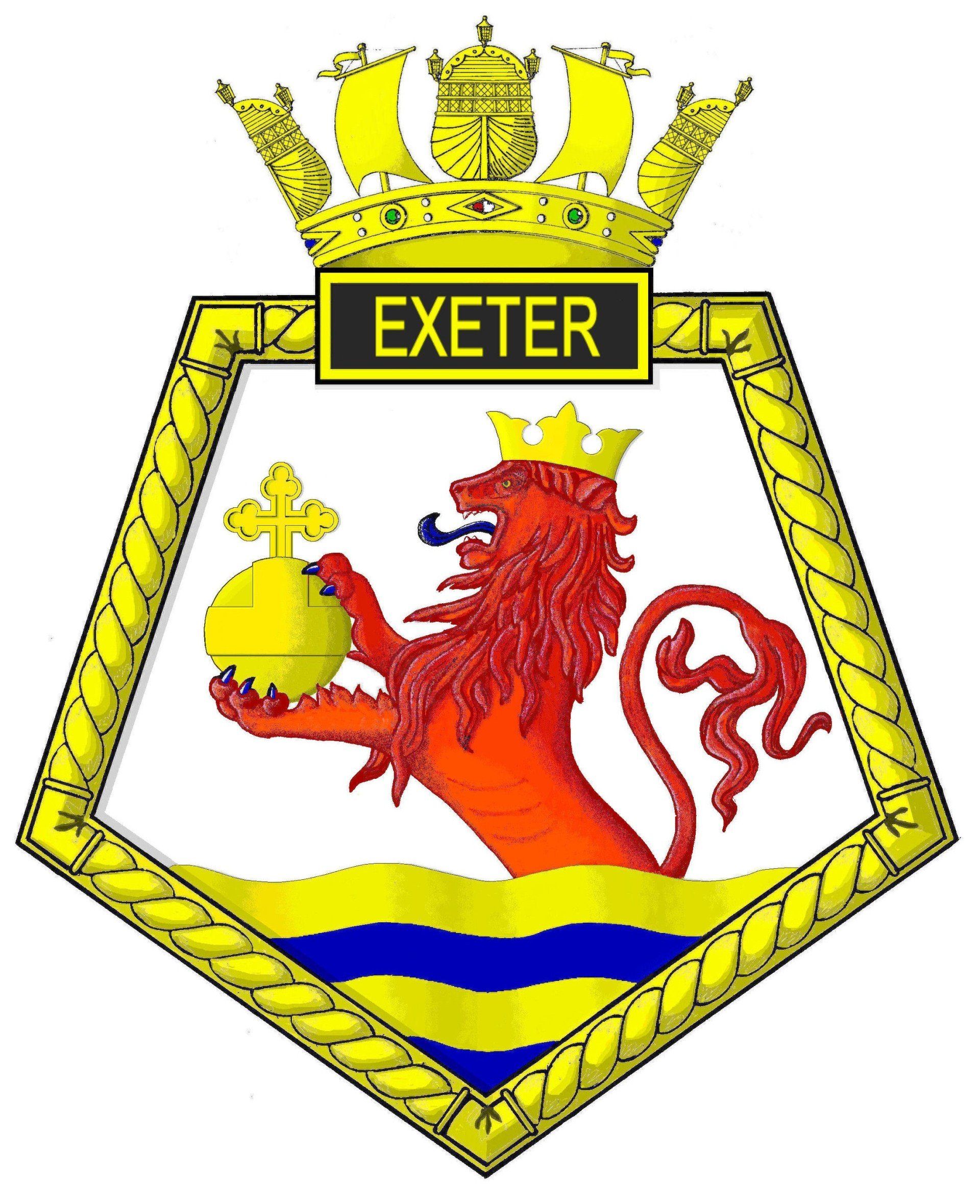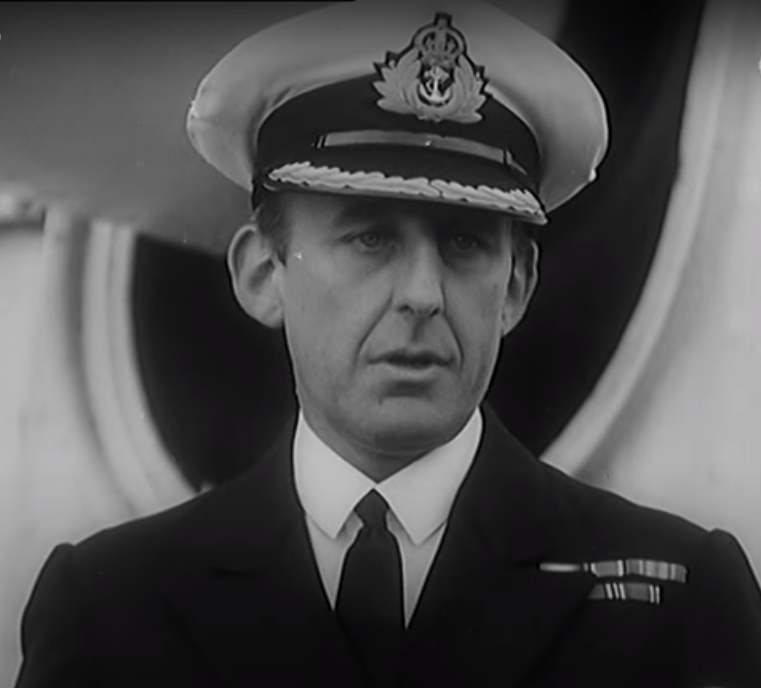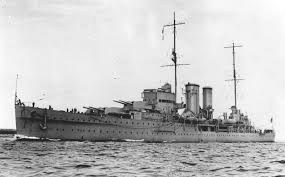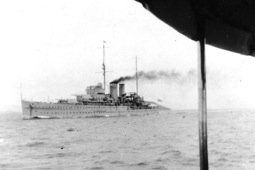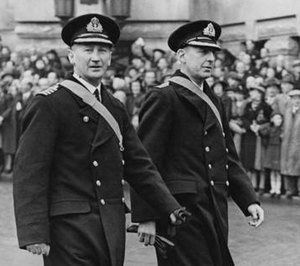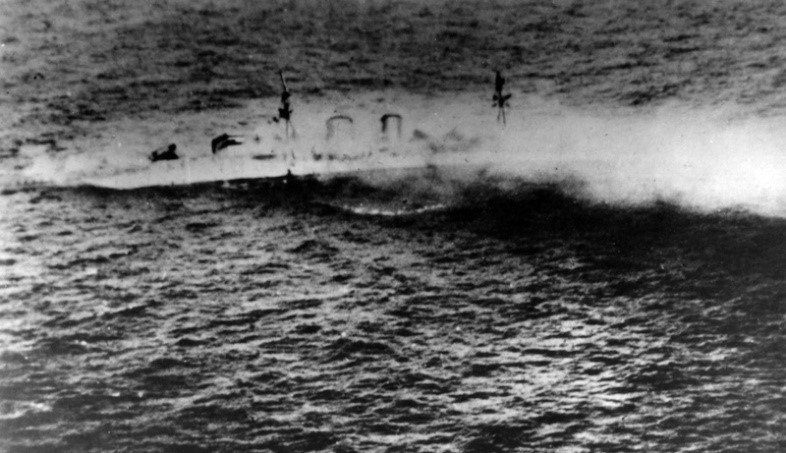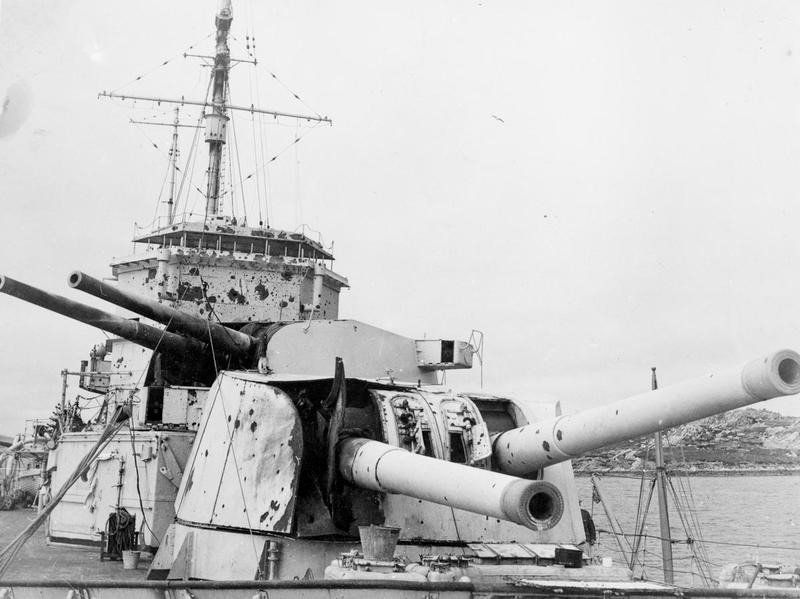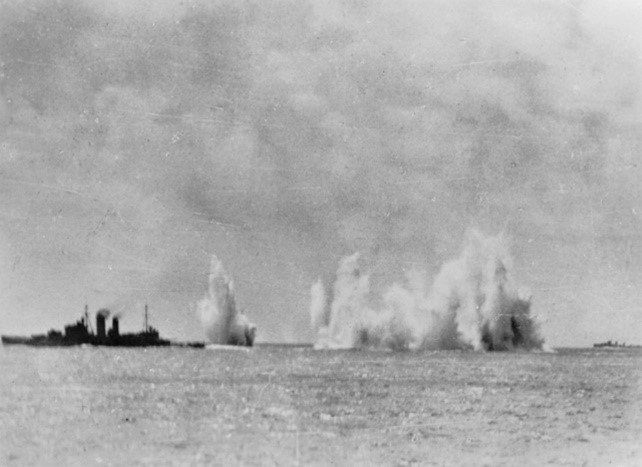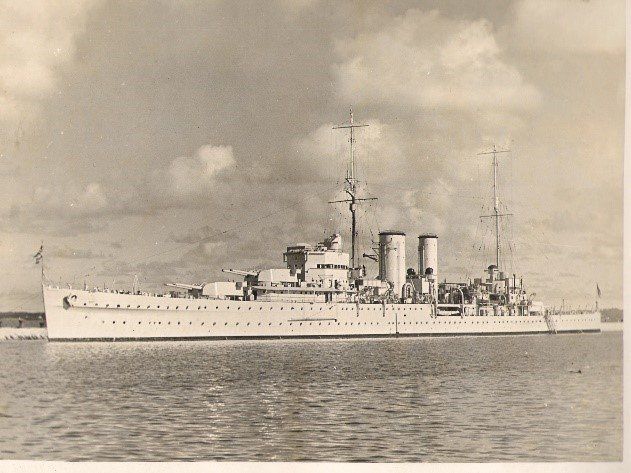HMS Exeter
HMS Exeter – By Jonathan Harwood (Grandson Admiral H Harwood)
Built at Devonport dockyard, Plymouth, the fourth HMS Exeter was a York-class heavy cruiser. She was launched in 1929 and commissioned in 1931. Designed following the Washington Naval Treaty of 1922 she was fitted with only six 8” guns as her main armament as opposed to the usual eight. Accordingly, in her stern she only had one turret – ‘Y’ turret. Weighing 8,400 tons, she also carried two Supermarine Walrus floatplane aircraft. From a distance she was recognisable by her twin funnels and very tall masts.
Exeter was initially assigned to the 2nd Cruiser Squadron of the Atlantic Fleet, where she served between 1931 and 1933. In 1934 she was assigned to the America and West Indies Station and remained there, aside from a temporary deployment to the Mediterranean during the Abyssinian Crisis of 1935–1936, until 1939.
After a refit in 1936 Commodore Harwood became her captain through to the end of her commission in August 1939, as part of the South American Division of the America and West Indies Fleet. She circumnavigated the South American continent twice, once alone and once in conjunction with HMS Ajax when aid was given to the Chilean government following the Concepción earthquake in 1939. In August 1939 she returned to Britain but, with war imminent, she was ordered to return to the South Atlantic as Commodore Harwood’s flagship in Force G (HMS Exeter, Cumberland, Ajax and Achilles) and with Captain Bell as her captain. Approximately six weeks prior to the Battle of the River Plate Harwood transferred to HMS Ajax as his flagship. Although it is not completely understood why this happened, one reason was that Ajax was designed and equipped to be a headquarters ship (so possibly more spacious). Another reason was that Harwood possibly planned to send Exeter to Simonstown in South Africa for a boiler clean, but this never happened.
HMS Exeter fought at the Battle of the River Plate on 13th December 1939. During the battle she was badly damaged with all her main armament either destroyed or out of action. She was taking in water and listing, although her engines remained intact. She retired from the battle and was able to reach the Falkland Islands where the wounded were treated by a medical team that travelled out from Buenos Aires. Sixty-six crew members were killed or subsequently died of their wounds. Initially not considered worth salvaging, at Winston Churchill’s insistence she was repaired using steel brought in from Argentina and escorted back to Plymouth by two cruisers since her main armament was still out of action.
From February 1940 until March 1941 Exeter was refitted and modernised. She left Britain for the last time in May 1941 and joined the East Indies Squadron, largely escorting convoys in the Indian Ocean between India and Singapore. After the outbreak of the Pacific War in December 1941 and the fall of Singapore in February 1942, Exeter became part of a joint American-British-Dutch-Australian command and was attacked by Japanese torpedo bombers during the Gaspar Strait Sortie.
At the first battle of the Java Sea (27 February 1942), Exeter was hit by a torpedo fired by a Japanese destroyer but luckily this did not detonate. However, a few minutes later her boiler room was hit by a shell fired by the Japanese heavy cruiser Haguro which crippled her, reducing her speed to just 5 knots. 13 crew were killed. However, she managed to return to Surabaya in the Dutch East Indies (modern Indonesia). There Exeter refuelled and the following day was ordered to steam to Ceylon (Sri Lanka). Early the following morning, at the second Battle of the Java Sea on 1 March 1942, Exeter and her escorts were attacked by a large force of Japanese cruisers. Although repairs had enabled her to reach a speed of 26 knots, another hit in her boiler room knocked out all power. Japanese destroyers then fired a total of 18 torpedoes at her, two of which struck her on the starboard side, as a result of which HMS Exeter quickly capsized and sank. 40 crew were killed and the Japanese rescued 652 men of the crew of the Exeter, including her captain, who became prisoners of war. Of these men, 152 died in Japanese captivity.
The wreck of HMS Exeter was located and positively identified in 2007, lying in Indonesian waters at a depth of about 200 feet (61m), 90 miles north-west of Barwean Island. Her wreck, a British war grave, had been destroyed by illegal salvagers when an expedition surveyed the site in 2016.
The fifth HMS Exeter was a Type 42 Destroyer. Commissioned in September 1980, her first captain was Jeremy Dreyer, son of Lieutenant (later Admiral Sir Desmond) Dreyer, gunnery officer in HMS Ajax at the Battle of the River Plate. HMS Exeter fought in the Falklands War and the first Gulf War and was scrapped in 2009.
In the 1956 film, ‘Battle of the River Plate’, HMS Exeter’s part was played by HMS Jamaica.
Captain Frederick Secker Bell 1897 – 1973
HMS Exeter:
Nicknamed “Hookie” due to the shape of his nose, Captain Bell was one of the last to graduate from Osborne College at the start of the First World War. Choosing to serve on submarines, he was Second-in-Command of submarine HMS D6 when it was torpedoed by German U-Boat-73 some 70 miles north of Inishtrahull Island off the west coast of Ireland on either the 24th or 28th June 1918. Only he and the captain survived and were captured. He spent the remainder of the war as a prisoner.
After the war he served on the China and then Australian stations where he met his wife. Following the Battle of the River Plate HMS Exeter returned to a hero’s welcome in Britain. Afterwards Bell was sent to the Far East and was famous for escaping Singapore on a yacht just as the Japanese were invading, before organising further escape to Australia aboard on old coal-fired Dutch coaster. Bell commanded the King George V-class battleship HMS Anson in 1945 but retired from the Navy owing to ill health in 1948. He was one of the principal advisers for the film of the battle in 1955 and was featured in an episode of the BBC programme, ‘This is your life’ in the same year. He died in 1973, aged 76.
HMS Exeter
Motto: Semper fidelis
– Always faithful.
Battle Honours
Sadras 1782; Providien 1782; Negapatam; Trincomalee; River Plate 1939; Sundra Strait 1942; Falkland Islands 1982
Ordered: 15 March 1928
Builder: Devonport Dockyard, Plymouth
Laid down: 1 August 1928
Launched: 18 July 1929
Commissioned: 27 July 1931
Sunk during the Second Battle of the Java Sea
1 March 1942
Identification: Pennant number 68
Class and type: York-class heavy cruiser
Displacement:
8,390 long tons (8,520t) (standard)
10,490 long tons (10,660t) (deep load)
Length: 575ft 1in (175.3m) overall
Beam: 58ft (17.7m)
Draught: 17ft (5.2m) light load
20ft 3in (6.2m) deep load
Installed power: 8 Admiralty 3-drum boilers
80,000 shp
Propulsion: 4 × shafts; 4 × geared steam turbine sets
Speed: 32knots (59kmh; 37mph)
Range: 10,000 nautical miles (19,000km; 12,000 miles) @ 14 knots (26kmh; 16mph)
Complement: 628
Armament:
3× twin 8in (203mm) guns -‘A’ & ‘B’ Turrets forward ‘Y’ Turret aft.
4× single 4in (102mm) AA guns
2x single 2-pdr (40mm) AA guns
2× triple 21in (533mm) torpedo tubes
Armour:
Waterline belt: 3in (76mm)
Deck: 1.5in (38mm)
Barbettes: 1in (25mm)
Gun turrets: 1in (25mm)
Magazines: 3–5.5in (76–140mm)
Bulkheads: 4.375in (111mm)
Aircraft carried: 2 × Walrus seaplanes 2 × aircraft catapults
